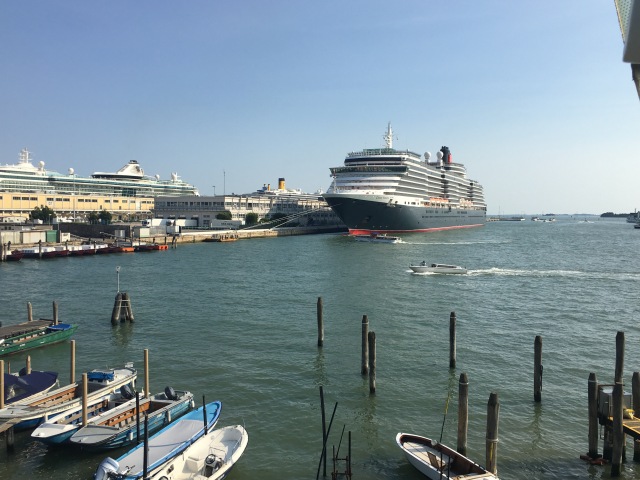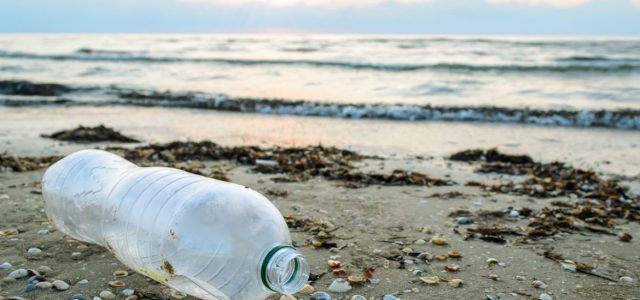A cruise ship crash in Venice focuses minds on changing docks

The awful crash of the Opera cruise ship on the morning of 2 June 2019 thankfully only led to 4-5 minor injuries from various reports.
The Opera had an engine failure and was blocked, but the thrust was on causing the speed to increase. It scraped along the dockside before crashing into a tourist boat at the San Basilio-Zattare quay after the cruise ship had navigated the Giudecca Canal. Two tugs had been guiding the cruise ship, but one of the chains linking them to the cruise ship broke under the pressure.
The Opera also had a mechanical problem in 2011 during a Baltic cruise, which required about 2,000 passengers to disembark. While the accident in Venice was dramatic and raises important questions, such problems are not unique to Venice and seem to attract attention due to the controversy about cruise ships in Venice rather than the practical issues. We should not over-react to such dramatic images;
Instead, it is vital to reflect on the long-term debate about the navigation of cruise ships in Venice. Unfortunately, the current Italian government has yet to decide on this, although the Minister of Infrastructure, Danilo Toninelli, said on 2 June, “After many years of inertia, we are finally close to a definitive solution to protect both the lagoon and tourism.” Toninelli has added that the government will make decisions by the end of June on how to manage cruise ship routes and docking in Venice.
The previous government, Venice’s City Council and other key bodies on the Comitatone (big committee) had agreed on the following changes. In 2017, it was decided that within three or four years a new cruise ship terminal will be constructed in the mainland industrial zones near the town of Marghera. It was hoped that this new terminal would be able to accommodate the largest, new generation cruise ships of 200,000 tons. However, any cruise ship over 55,000 tons would have to dock here and would not be able to pass through St Mark’s Basin in the centre of Venice. Instead, these vessels would enter the Malamocco inlet between the lagoon and the sea and would navigate through the Petrol Channel (see link at end of this blog for map) to the new terminal. Previously, this channel was predominantly used for oil tankers navigating to and from the oil refinery in the Marghera industrial area.
It may also be possible for medium sized vessels to navigate from the new cruise ship terminal at Marghera or the Petrol Channel to the Maritime Station Port in central Venice through the Vittorio Emanuele III Channel. This would require dredging the currently unused Vittorio Emanuele Channel III from its current 6 metre depth to 9 metres. In addition, the Malamocco-Marghera channel would need to be widened to cope with both industrial and tourist vessels. These works would have an impact on the lagoon’s environment. The decisions on whether to proceed with these changes will depend on an Environmental Impact Assessment already ordered.
Smaller cruise ships and other vessels below 55,000 tons would be able to continue navigating through the centre of Venice and St. Mark’s Basin, entering and leaving the lagoon through the Lido inlet. They would continue to be able to dock at the Maritime Station Port and other docking points in the centre of the city, which was considered important to protect local jobs at these locations.
Inevitably, the new cruise ship terminal and transporting passengers between it and Venice by boat or road will lead to new jobs for these operations and in the construction of the new terminal.
As we have previously argued in many articles on this blog, our preferred solution would have been to construct a cruise ship terminal outside the lagoon connected to a new subway train system for the lagoon, city and airport. Nevertheless, the Comitatone decisions have the merit of developing tourism and cruise ship business in Venice with minimal disruption of the lagoon environment. Moreover, docking larger cruise ships at the new terminal should take them away from docking close to residential properties, which has been very disruptive for some local residents. So, while these decisions do not correspond to our previous proposals, they do have some advantages. However, given the experience of numerous changed decisions, plus delayed and failed projects in Venice, it remains to be seen whether these decisions will be implemented.
We hope that today’s accident will focus minds on improving cruise ship docking in Venice.
Map of Venice and its channels:




Comments
One Response to “A cruise ship crash in Venice focuses minds on changing docks”Trackbacks
Check out what others are saying...[…] Nevertheless, the No Big Ships campaign gained momentum after four people had minor injuries due to the dramatic crash of the Opera cruise ship in Venice on 2 June 2019. As was set out in this blog post then, this crash led the government at that time to consider docks outside the lagoon but no long-term decisions were made: https://dstandish.com/2019/06/02/a-cruise-ship-crash-in-venice-focuses-minds-on-changing-docks/ […]